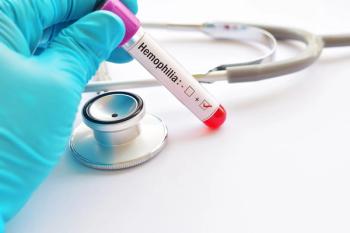
Magnetic growing rods treat scoliosis
An implanted rod that lengthens under noninvasive magnetic control to treat the spinal curvature of scoliosis is showing success at the 2-year testing mark. What can this experimental treatment mean for your patients with scoliosis?
An implanted rod that lengthens under noninvasive magnetic control to treat the spinal curvature of
The spinal implant consists of a titanium distractible rod with an enlarged midportion that contains a magnetically drivable mechanism. At 1-month outpatient follow-ups, the rods are incrementally lengthened using a handheld remote controller placed on the patient’s back.
In
In 1 patient aged 5 years, 8 months, at time of implant, the preoperative Cobb angle (the angle of intersecting perpendicular lines drawn from the top and bottom of the curved part of the spine) was 74° from T9-L5. The immediate postoperative angle was 19°, and at 24 months it was 26°.
In a second patient aged 12 years, 1 month, at time of surgery, the preoperative Cobb angle was 60° from T5-T11. The immediate postoperative angle was 31°, and at 24 months it was still 31°.
The other 3 patients had not yet reached the 2-year follow-up mark.
Standard manual lengthening of growing rods in children with scoliosis takes place every 6 months and involves reopening the spinal surgical incision site. Besides involving general anesthesia and wound complications, traditional growing rod surgery is associated with various socioeconomic drawbacks, such as missed school and work time and increased health care costs.
The magnetically controlled growing rods are lengthened in an outpatient setting, minimizing pain, surgical scarring, and psychological distress.
More time is needed before the experimental treatment can be compared to standard therapies, the researchers say. However, they predict that the technique could be used for noninvasive correction of bone abnormalities in other disorders.
Newsletter
Access practical, evidence-based guidance to support better care for our youngest patients. Join our email list for the latest clinical updates.











